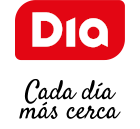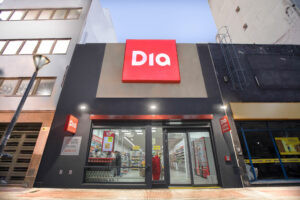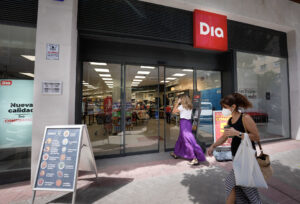DIA Group posts 2.7% LFL sales growth in 9M 2018
October 30, 2018
The company’s aim is to consolidate its leadership position in the Spanish food retail market.
Antonio Coto stated that “we will concentrate our efforts in Spain, our main market, with a realistic
and strict operating change plan in the short term, in order to reverse the current trend. We will focus
on customer’s satisfaction and on cash generation”.
In Spain, capex reached EUR196m between January and September, implying a 71% increase.
Operating profit, adjusted EBITDA, fell by 24% to EUR281m.
The CEO wanted to make it clear that “it’s time to look ahead; I want to promote a DIA where the
entire value chain must be put at the service of clients listening them to know their preferences and
tastes, so they can find in our stores quality products at the best price with excellent service”
During the first nine months of the year, the DIA Group’s LFL sales grew by 2.7%, excluding the calendar effect. However, including the depreciation effect of the Brazilian and Argentinian currencies, sales fell by 9.0%, which implies gross sales under banner of EUR6.949bn.
CEO Antonio Coto wanted to highlight that “the group’s intrinsic value is beyond doubt, and its more than 7,000 stores continue to do business as usual, with good sales volumes and cash flow generation”.
Capex reached EUR269.1m, of which EUR196m was invested in Spain in the remodelling of the proximity stores. This figure is almost three times higher than the same period in the previous year.
Operating profit, adjusted EBITDA, fell by 24% to EUR281m.
For the full-year 2018, the DIA Group reiterates its EUR350-400m adjusted EBITDA range, versus EUR586m in 2017.
Around 2,5% of this decrease is due to a reduction in sales in Iberia, where a series of strategic policies that were implemented have not yielded the expected results (the low level of adaptation of the company’s products, services, and own label range to clients’ current needs).
The DIA Group is clear about its strategy and the winning formats on which it needs to focus investments to maximise returns and value for the business,
1) DIA&Go and la Plaza are posting LFL growth rates of over 20% and 8% respectively;
2) Online sales are generating strong growth, with a 30% increase in the 12 months to September and a market share of 10%, and it is an essential value driver for a proximity business like the DIA Group’s.
Antonio Coto gave a clear and strong message regarding DIA’s future outlook, based on the strength of its brand and its track record in terms of generating margins that are way above the sector average. In order to cope with the current difficulties, the CEO stated that “the company will place an emphasis on cautious cashflow management and on reducing capex levels in the short term”. “We will be much more disciplined with each euro that we invest, as with the monitoring and control of returns “, and he made it clear that he does not anticipate any detriment to the business profile as a result of the measures adopted.
He stated that “the efforts will be focused on Spain, with an operating plan aimed at a realistic and strict recovery in the short term, with the objective of turning around the current negative trend”.
Outside Spain, the DIA Group basically plans to follow the key initiatives implemented in Spain, with a more selective and restrictive focus on investments. Antonio Coto highlighted the good positioning of the businesses in Brazil and Argentina, although he recognised that “in light of the macroeconomic uncertainty that is currently affecting these two economies, it is time to maintain a neutral stance, with no measures one way or the other”.
“Looking at the future, I want to build a DIA that is entirely focused on clients, and they will define our
conversations from now on. All of DIA’s value chain must be put at the service of the client so that they can find in our stores quality products at the right price with excellent service. In order to achieve this, I have already started to work closely with our suppliers, franchisees, and employees”, stated Antonio Coto, CEO of the DIA Group.
As of September 2018, net debt was EUR1.42bn and the DIA Group had a network of 7,429 stores.
GLOSSARY
● Gross sales under banner: Total turnover value obtained in stores, including indirect taxes (sales receipt value) in all the company’s stores, both owned and franchised.
● LFL sales growth under banner: Growth rate of gross sales under banner at constant currency of the stores that have been operating for more than thirteen months under the same business conditions.
● Other items excluded from adjusted EBIT: Volume of costs and revenues the company isolates in the management accounts to gain a better understanding of the underlying performance of the core business during the period. Items usually excluded from adjusted EBIT are classified between “Other cash items”
(Expenses relating to acquisitions, expenses for restructuring and efficiency projects, expenses relate to the transfer of own stores to franchises, and gains on disposal of assets), “Expenses related to share-based payments transactions” and “Other non-cash items” (Losses on write-down of fixed assets, impairment of fixed assets and amortization related to the closing of stores).
● Adjusted EBITDA: Operating profit after adding back depreciation and amortization (including amortization related to the closing of stores and impairment of fixed assets), losses on write down of fixed assets, “Other cash items” and “Expenses related to share-based payments transactions”.
● Adjusted EBIT: Operating profit after adding back “Other cash items”, “Expenses related to share-based payments transactions” and “Other non-cash items”.
● Underlying net profit: Net income calculated on net profit attributable to the parent company, adjusted by “Other items excluded from adjusted EBIT”, “Items excluded from financial income and expenses”, “Items excluded from income tax” and “Losses net of taxes of discontinued operations”.
● Basic EPS: Fraction of the company’s profit calculated as net attributable profit divided by the weighted average number of shares.
● Underlying EPS: Fraction of the company’s profit calculated as underlying net profit divided by the weighted average number of shares.
● Net financial debt: Overall financial situation of the company that results by subtracting the total value of company’s short-term, long-term financial debt, other financial liabilities from the total value of its cash, cash equivalents, and other liquid assets. All the information necessary to calculate the company’s net debt is included in the balance sheet.
● Cash from operations: Adjusted EBITDA less “Other cash items”, less Capex excluding acquisitions. This internally calculated cash flow measure is included as one of the key financial metrics of the long-term incentive plan for the company’s top management.






